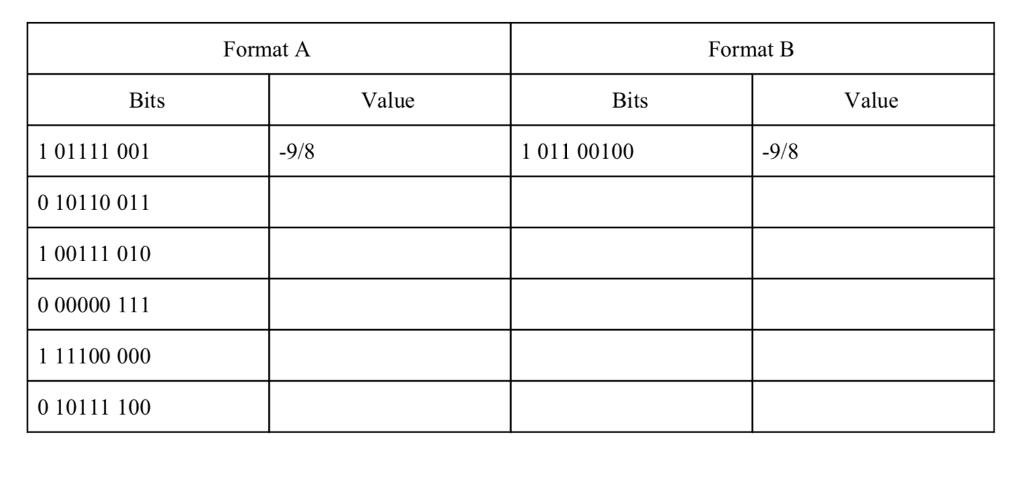Question
Consider the following two 9-bit floating point representations based on the IEEE floating point format. Neither has a sign bit - they can only represent
Consider the following two 9-bit floating point representations based on the IEEE floating point format. Neither has a sign bit - they can only represent non-negative numbers. i).
Format A. There is 1 sign bit
There are k=5 exponent bits.
The exponent bias is 15.
There are n=3 fraction bits.
ii). Format B.
There is 1 sign bit
There are k=3 exponent bits.
The exponent bias is 3.
There are n=5 fraction bits.
Below, you are given some bit patterns in Format A, and your task is to convert them to the closest value in Format B. If necessary, you round towards +infinity. In addition, give the values of numbers given by the Format A and Format B bit patterns. Give these as whole numbers (e.g., 17) or as fractions (e.g., 17/64 or 17/2). Format A Format B

Step by Step Solution
There are 3 Steps involved in it
Step: 1

Get Instant Access to Expert-Tailored Solutions
See step-by-step solutions with expert insights and AI powered tools for academic success
Step: 2

Step: 3

Ace Your Homework with AI
Get the answers you need in no time with our AI-driven, step-by-step assistance
Get Started


